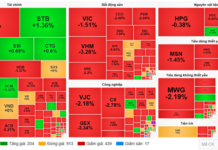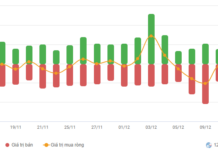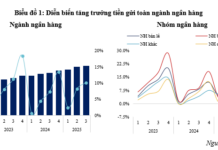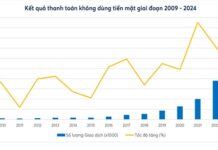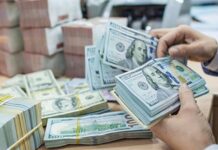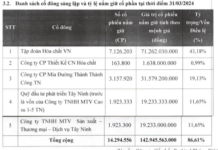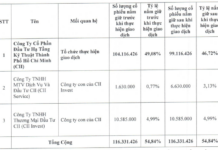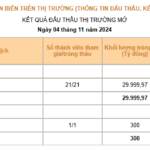Over the past month, USD rate fluctuations in the domestic market have caused concerns about potential impacts on production and business operations towards the end of the year.
Significant Pressure on Businesses
Statistics show that in August, the USD exchange rate at Vietcombank increased by up to 142 VND in buying and 122 VND in selling compared to the end of July. Meanwhile, at BIDV, the respective increases were 176 VND and 135 VND. In the free market, the fluctuations were even more evident, with the USD rate surging by approximately 140 VND to settle at 26,650-26,720 VND. Since the beginning of the year, both the central exchange rate and the commercial exchange rate have risen by about 3.68%, a notable increase compared to the previous period.
According to enterprises (DN), exchange rate fluctuations have promptly affected production and business activities, especially for those importing raw materials in preparation for the year-end peak season. Mr. Vo Thanh Loc, Commercial Director of the Farmers Market chain of stores in Ho Chi Minh City, shared his concern about the rising exchange rate during the peak import season for the Lunar New Year. However, he assured that the enterprise would maintain the planned import volume. When the goods arrive at the port, the final retail price will be calculated by the enterprise based on actual costs and the market situation. “The Lunar New Year market is highly competitive, so we can’t just raise prices in response to rising import costs. We also have to consider the market price level and consumer purchasing power,” said Mr. Loc.
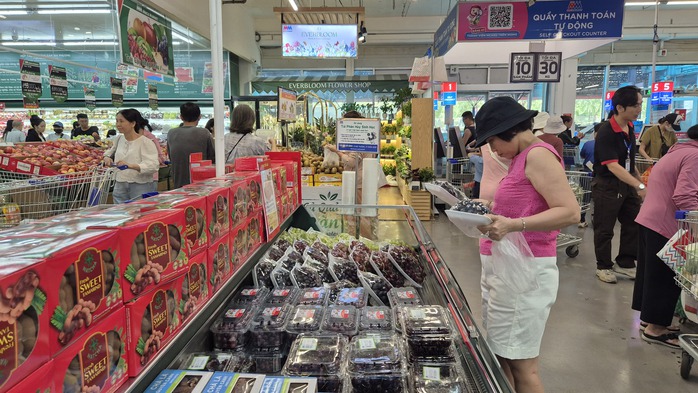
Imported goods section at MM Mega Market An Phu, Ho Chi Minh City. Photo: AN AN
Mr. Loc also emphasized that in the retail industry, finding good sources of goods with production advantages and competitive pricing is the key to successful consumption, while the exchange rate is just one part of the overall equation.
Mr. Bach Khanh Nhut, Vice Chairman of the Vietnam Cashew Association (Vinacas), shared that the cashew industry both imports raw materials and exports cashew nuts. At first glance, it might seem balanced when the exchange rate fluctuates. However, in reality, most enterprises do not have ready USD and have to purchase it on the free market for importing and debt repayment. With the current exchange rate, the cost of imports has increased far beyond expectations, causing difficulties for cashew enterprises. “While cashew exports are stagnant, many enterprises struggle to sell their products as the US and European markets are almost frozen. Customers are only buying cautiously, monitoring the global economic situation, and not expanding their orders,” said Mr. Nhut.
Mr. Nhut added that currently, enterprises mainly rely on the Chinese market for the Mid-Autumn Festival, while anxiously awaiting October, which is expected to be more vibrant as it marks the beginning of the year-end shopping season. “Not only the cashew industry but also other enterprises hope for a stable exchange rate to facilitate their business plans. At present, the business equation revolves around balancing capital costs and selling prices, making it challenging to devise long-term strategies,” shared Mr. Nhut.
Proactive Intervention Strategy
It is noteworthy that the USD exchange rate in Vietnam has been climbing steadily despite the cooling down of the US dollar in the international market. If we consider the beginning of the year, the US Dollar Index (DXY) has dropped by about 11%, but in Vietnam, the currency has appreciated against the VND. Experts attribute this contrast to the increased demand for foreign currency for importing goods as global trade undergoes various changes.
On September 1st, Dr. Nguyen Huu Huan, from the University of Economics Ho Chi Minh City (UEH), shared his insights with the Labor Newspaper reporter. He stated that the State Bank of Vietnam (SBV) is maintaining a loose monetary policy to keep interest rates low and support economic growth. “In this context, the USD/VND exchange rate is likely to face upward pressure and may continue to fluctuate until the end of the year. It is crucial for enterprises to carefully calculate and avoid immediately raising selling prices when import costs increase due to exchange rate fluctuations. Instead, they can utilize appropriate financial risk management tools to mitigate negative impacts,” advised Dr. Huan.
From another perspective, Mr. Vu Minh Duc, Commercial Representative of the California Raisin Trade Association in Vietnam, suggested considering the exchange rate in relation to other major currencies. “Indeed, the USD has strengthened against the VND, but in many other markets, the USD has weakened against the euro or the British pound. Therefore, Vietnamese enterprises importing goods in USD still have an advantage compared to transactions in other currencies,” analyzed Mr. Duc.
However, in the past week, the USD/VND exchange rate has shown signs of cooling down, which is a positive signal indicating that the pressure on the exchange rate may ease in the final quarter of 2025. Mr. Nguyen Thanh Lam, Director of Individual Customer Analysis at Maybank Securities Company, noted that there was a time when the market exchange rate surpassed the 26,500 VND/USD mark. Immediately, the SBV demonstrated its proactive approach to stabilizing the market through timely solutions, such as announcing the sale of USD through cancellable 180-day forward contracts at 26,550 VND/USD, slightly higher than the market rate at that time (26,512 VND/USD). “This intervention was limited to banks with negative foreign exchange positions, with an allocation just enough to balance their positions. This helped reduce short-term pressure on the exchange rate while preserving foreign exchange reserves. It was a very proactive strategy that stabilized the market sentiment, curbed speculation, and provided Vietnam with flexibility to respond to global volatility,” emphasized Mr. Lam.
From another angle, experts from MBS Securities Company pointed out that despite predictions of a continued USD decline towards the end of the year as the US Federal Reserve (Fed) may start cutting interest rates, there are still internal pressures on the exchange rate. One reason is the surge in demand for imports from the US as the 0% tax rate comes into effect, while exports may slow down, narrowing the trade surplus. Additionally, the gap between domestic and international gold prices is widening as international gold prices rise, indirectly stimulating the demand for foreign currency in the free market for illegal gold imports.
Credit Growth Expected to Surge
Mr. Dinh Duc Quang, Director of Currency Business Division at UOB Vietnam, shared that in the short term, the SBV has not made any moves to adjust the policy interest rate for VND. However, if the Fed cuts interest rates in September and the downward trend in USD interest rates becomes more apparent from late 2025 to early 2026, the SBV may reduce the VND interest rate by about 0.5 percentage points. Consequently, the USD is expected to cool down to around 26,000 VND/USD by the end of the year, implying a mere 2-3% increase in the exchange rate for the whole year.
According to Mr. Quang, deposit and lending rates are unlikely to drop significantly due to capital pressure. Still, credit growth can accelerate, with an annual increase of 18-20%. This will be a crucial boost, facilitating enterprises’ access to capital and contributing to economic growth in the last months of the year.
Maintaining Exchange Rate Stability
“With the busiest season for trade fast approaching, businesses are yearning for stable exchange rates to ease their financial worries. As the markets gear up for the frenzied festive period, a consistent currency value could be the difference between a prosperous year-end and a stressful scramble for many companies.”
What Does the SBV’s Net Injection Move Mean?
The recent net injection by the SBV on November 4th is a strong move to support liquidity, especially amidst the surging USD/VND exchange rate in both the official and free markets. The SBV’s intervention sends a clear message of their commitment to stabilizing the currency market and shielding the domestic financial sector from excessive volatility.
The Pennies-for-Dollars Stock List
As of the market close on 11/10/2024, the VN-Index stood at 1,288 points, marking a notable 14% increase since the beginning of the year, equivalent to a rise of 157 points. However, not all stocks have fared equally well. Some have plummeted or stagnated over the past year, lingering in the notoriously low-priced “tea and chat” zone.


